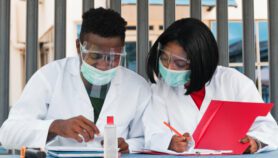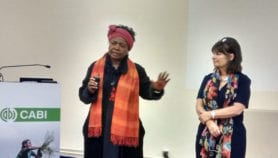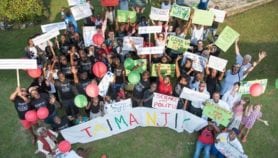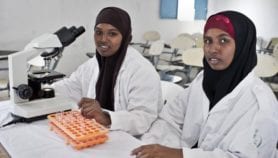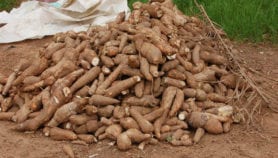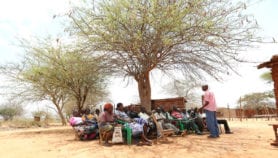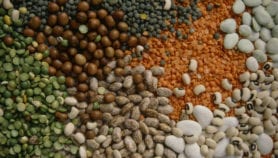By: Katie Mantell
Send to a friend
The details you provide on this page will not be used to send unsolicited email, and will not be sold to a 3rd party. See privacy policy.
 Improved cassava at the International Institute of Tropical Agriculture |
The Global Partnership for Cassava Genetic Improvement aims to develop and use advanced biotechnologies such as genomics to improve cassava crops, for example by making such crops resistant to pests, or by increasing their nutritional content.
“Cassava is the most reliable source of food for subsistence farmers in Africa, Asia and Latin America, but it is also an important industrial and cash crop that can promote rural development,” says Alfred Dixon of the International Institute of Tropical Agriculture in Nigeria. “The technologies being promoted by this partnership will allow breeders like me to more rapidly improve cassava’s value and performance.”
Despite the fact that cassava is the third largest source of calories in the tropics, after rice and corn, investment on research in improving the crop has been relatively low. As a result, cassava productivity has increased by less than one per cent a year over the past three decades, compared to between two and five per cent in rice, wheat and corn.
In Africa, for example, average cassava yield is eight tonnes per hectare, even though the potential yields are more than 80 tonnes per hectare. Bacterial and viral diseases, insect pests, weeds and drought all combine to limit cassava production. Although conventional breeding efforts have attempted to address these constraints, progress has been slow, partly because of the crop’s complex genetic makeup, which makes it difficult to develop new strains efficiently.
Many scientists think that new tools such as biotechnology offer useful approaches to cassava improvement. “For the first time, the potential exists to efficiently identify beneficial traits in wild and domesticated cassava plants and then transfer these traits to farmer-preferred cassava varieties, in a predictable and timely manner,” says Claude Fauquet of the US-based Donald Danforth Plant Science Center. “If successful, these improvements will change hundreds of millions of lives.”
The participating institutions — which include research centres from Africa, Asia, Latin America, Europe and North America, as well as international bodies such as the United Nations Food and Agriculture Organisation — have agreed to coordinate their research efforts, share findings, incorporate the views of farmers, respect safety regulations, and build scientific capacity in cassava-growing countries.
According to Wilhelm Gruissem of the Swiss Federal Institute of Technology, one of the founding institutions: “Now that we have a partnership and a plan, the next challenge will be to raise funds for specific collaborative research projects that will allow us to develop and use these technologies to make cassava a more productive and nutritious crop, particularly for the poor.”
© SciDev.Net 2002
Photo credit: CGIAR/ International Institute of Tropical Agriculture
More on Networks

Script media release
Journalists offered ‘big break’ mentoring opportunity from Radio Nigeria
03/04/19


